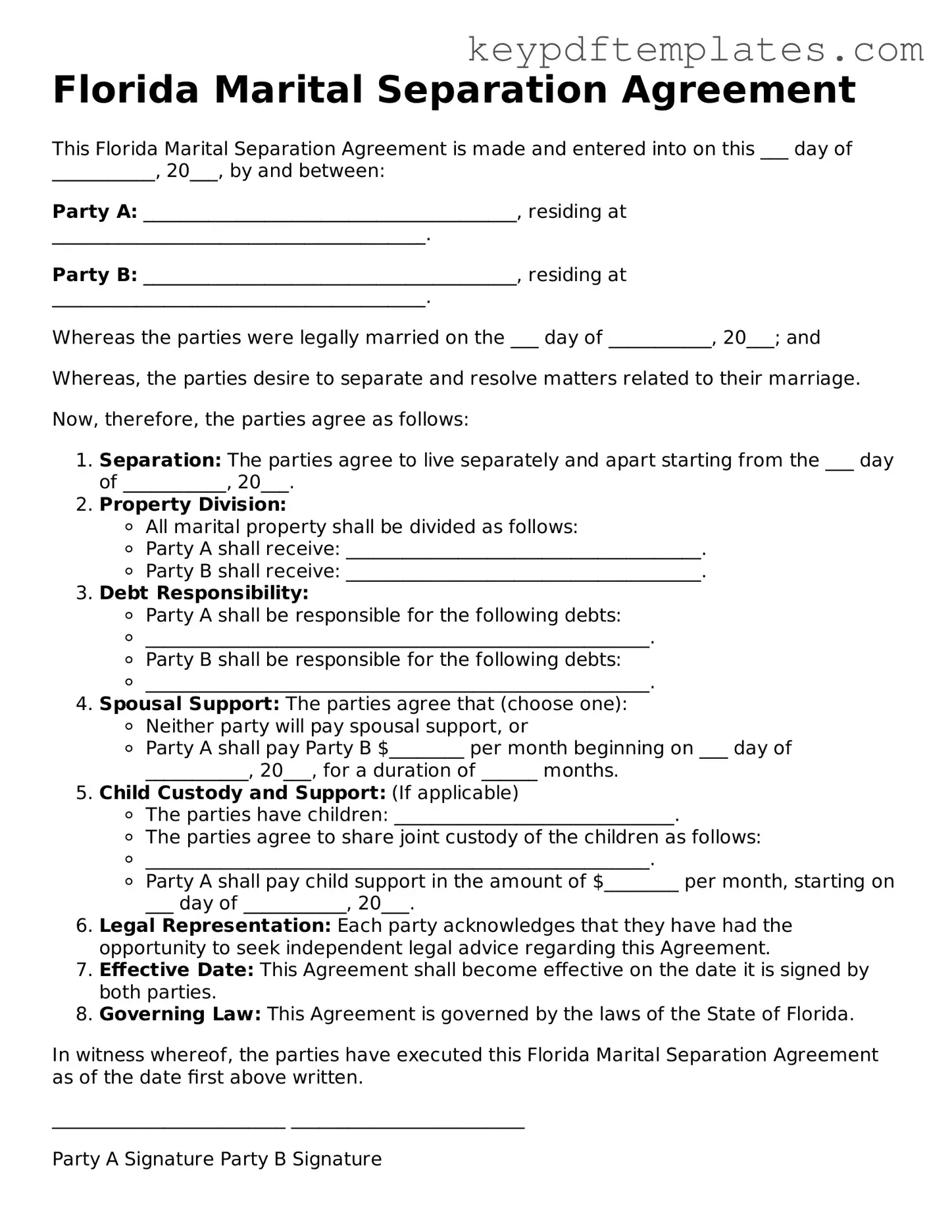Legal Marital Separation Agreement Document for the State of Florida
A Florida Marital Separation Agreement form is a legal document that outlines the terms of a couple's separation. This agreement can cover various aspects, such as division of property, child custody, and support obligations. By clearly defining these terms, both parties can work towards an amicable separation process.
Modify Document Online
